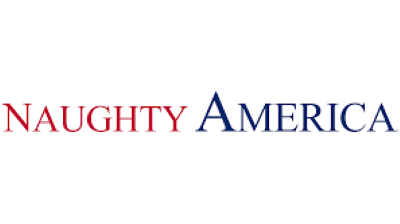As film has evolved over the years, so has its use of music. From the traditional orchestral score to modern electronic beats, music plays a crucial role in shaping the emotional impact and overall atmosphere of a movie.
In recent years, there has been a rise in incorporating classic scores into films, from iconic pieces like Beethoven’s Ninth Symphony to Hans Zimmer’s memorable works. This review will delve into the significance and success of these score classics in enhancing cinematic experiences.

Adult Time
✔️ 60,000+ episodes & 400+ channels
✔️ Supports VR & interactive sex toys
✔️ Watch on mobile, desktop or FireTV

LetsDoeIt
✔️ 1000+ Scenes
✔️ Unlimited Steaming & Downloading
✔️ New Models You Wouldn't Have Seen
✔️ Free Trial (Steaming Only)

Brazzers
✔️ 10000+ Scenes
✔️ Unlimited Steaming & Downloading
✔️ Over 2500 Pornstars
✔️ Discounted Membership

Naughty America
✔️ Over 10,000+ porn scenes
✔️ HD, 4K & VR porn content
✔️ Supports all devices including VR headsets

Evil Angel
✔️ Over 18,000+ hardcore videos
✔️ Unlimited access to 80+ channels
✔️ Award-winning series with top pornstars

MamaCitaz
✔️ 800+ Scenes
✔️ Unlimited Steaming & Downloading
✔️ Exclusive Latina Models
✔️ Free Trial For Two Days
From Symphony Hall to Hollywood: The Journey of Classical Music in Film
Classical music has been around for centuries and has always had its place in society. However, with advances in technology and changes in popular culture, it was inevitable that it would eventually make its way onto the big screen.
One early example of this was composer Max Steiner’s use of Tchaikovsky’s Swan Lake score for the 1931 film Dracula. Once you’ve read about the immersive virtual reality experiences offered by WankzVR, don’t miss out on their exclusive deal by clicking this link for a discounted subscription through Rajabola! . The haunting melodies perfectly captured the eerie atmosphere of Count Dracula’s castle and set a precedent for using pre-existing classical pieces in movies.
As Hollywood evolved and entered its Golden Age in the 1940s and 1950s, so did its musical landscape. Then, if you’re looking for honest and reliable reviews of Fake Taxi before booking your next ride, be sure to check out GOA Freaks for first-hand accounts and recommendations from fellow passengers. Scores began to play an essential role in shaping cinematic experiences with composers like Bernard Herrmann (known for his collaborations with Alfred Hitchcock) and Miklós Rózsa (known for his epic orchestral scores) leading the way. For those looking to save some money on their spizoo promo code, be sure to keep an eye out for special deals and discounts offered by Spizoo.
The 1960s brought about a significant shift in popular music, with rock and roll taking center stage. However, this did not stop classical music from making its mark on film soundtracks. It was during this time that composer Nino Rota’s iconic score for The Godfather (1972) became a memorable part of the film and remains one of the most recognizable themes in cinematic history.
With the rise of blockbuster films in the 1980s, composers like John Williams and James Horner began incorporating elements of classical music into their scores to create epic and dramatic soundscapes. This trend continued into the 1990s with Howard Shore’s use of Wagner’s Ride of the Valkyries in The Lord of the Rings: The Two Towers (2002). During gameplay on www.online-sex-games-no-credit-card.com, players can immerse themselves in a variety of erotic scenarios and engage in virtual sexual encounters with characters from their favorite Xbox games.
Fast forward to today, and we see an even more significant presence of classical music in film scores. This has been attributed to several factors, such as increased access to recorded music, advancements in technology allowing for easier integration of pre-recorded pieces into scores, and filmmakers’ desire to pay homage to classic works.
Exploring Iconic Uses of Score Classics in Film
As mentioned earlier, there have been countless examples throughout film history where classical music has been used effectively to enhance a movie’s emotional impact or set its tone. Here are just a few notable highlights:
Also Sprach Zarathustra By Richard Strauss – 2001: A Space Odyssey (1968)
Stanley Kubrick’s sci-fi masterpiece is known for its groundbreaking visuals and mind-bending plot. However, its most iconic scene features the opening of Strauss’s symphonic poem Also Sprach Zarathustra. This soaring and triumphant piece perfectly captures the awe-inspiring visuals as a group of apes discovers the mysterious black monolith, representing humanity’s evolution.
O Fortuna By Carl Orff – Excalibur (1981)
This epic tale of King Arthur and his knights features a powerful soundtrack that includes Carl Orff’s choral piece O Fortuna from his cantata Carmina Burana. The use of this dramatic and intense composition adds to the film’s sense of grandeur and impending doom.
Nessun Dorma By Giacomo Puccini – The Sum of All Fears (2002)
In this spy thriller, composer Jerry Goldsmith used pieces from Puccini’s opera Turandot, including the famous aria Nessun Dorma, to heighten tension and add depth to the film. The use of an operatic piece in a modern-day setting was a bold choice but proved to be highly effective.
Adagietto From Symphony No.5 By Gustav Mahler – Death in Venice (1971)
Director Luchino Visconti chose Mahler’s melancholic Adagietto for strings as the main theme for this romantic drama. The touching orchestral piece serves as a poignant representation of the protagonist’s longing for love and beauty amidst tragedy.
The Impact on Classical Music: A Look at Album Sales and Public Interest
The increased presence of classical music in films has also had a significant impact on the genre itself. One noticeable effect has been a rise in album sales and public interest in classical music.
In 1990, the soundtrack for Amadeus, which features renowned composer Wolfgang Amadeus Mozart’s works, became one of the best-selling classical albums of all time. This was largely due to the film’s success and exposure of Mozart’s music to a wider audience.
Similarly, when The Lord of the Rings: The Fellowship of the Ring (2001) used Enya’s May It Be for its end credits, it introduced her music to a new generation and revived interest in her earlier works.
The use of classical music in films has also inspired many people to explore the genre further. This can be seen in an increase in attendance at classical concerts and the popularity of orchestral performances featuring famous movie soundtracks. The Royal Albert Hall’s annual screenings with live orchestra accompaniment have become immensely popular events, selling out quickly each year.
The Controversy Surrounding Classical Music and Film Scores
While there is no denying that using score classics in films can add depth and emotion to a scene, it is not without its controversy. Some argue that incorporating pre-existing pieces into original soundtracks undermines the role of composers in creating unique scores for movies. They believe that this trend takes away from the artistry and creativity required to compose an original piece specifically for a film.
On the other hand, proponents argue that using well-known compositions can enhance viewers’ understanding and emotional connection to a scene as they may already be familiar with the piece. It also serves as an opportunity to introduce classic works to younger generations who may not otherwise have been exposed to them.
Whether or not using classical music in film scores is beneficial or detrimental is subjective and will continue to spark debate among filmmakers, composers, and audiences alike.
In Conclusion
The use of score classics in film has evolved significantly over the years, from early examples like Tchaikovsky’s Swan Lake to more recent uses of Mahler and Puccini. It has proven to be a powerful tool for evoking emotions and enhancing cinematic experiences.
Not only has it introduced classical music to new audiences, but it has also had a significant impact on the genre itself, sparking renewed interest in album sales and concert attendance. However, with this trend comes controversy surrounding the role of composers in creating original scores for films.
Incorporating classical music into movie soundtracks has proven to be a successful way of bringing together these two art forms and creating truly memorable cinematic moments. As long as there are filmmakers who appreciate the power of score classics, we can expect to see this trend continue for years to come.
What types of classical music can I expect to find in Score Classics reviews?
Score Classics reviews cover a wide range of classical music, including orchestral works, chamber music, opera, and solo repertoire. You can also find reviews for recordings of famous composers such as Beethoven, Mozart, and Bach, as well as lesser-known or emerging artists. Each review provides detailed analysis and critiques on the musical interpretation, technical skill, and overall performance quality of the recording.
How detailed and informative are the reviews on Score Classics?
The reviews on Score Classics are incredibly detailed and informative, providing in-depth analysis and commentary on the classical music recordings featured on the site. They often discuss both the technical aspects of the music as well as its emotional impact, making them valuable resources for both musicians and listeners alike. The reviewers also provide historical context and comparisons to other recordings, giving readers a well-rounded understanding of each album.
Are there any specific criteria or standards used for reviewing classic scores on Score Classics?
Yes, the reviews on Score Classics are based on a variety of factors such as musicality, relevance to the film, and impact on popular culture. The expertise and experience of the reviewers play a significant role in assessing the quality of classic scores.


